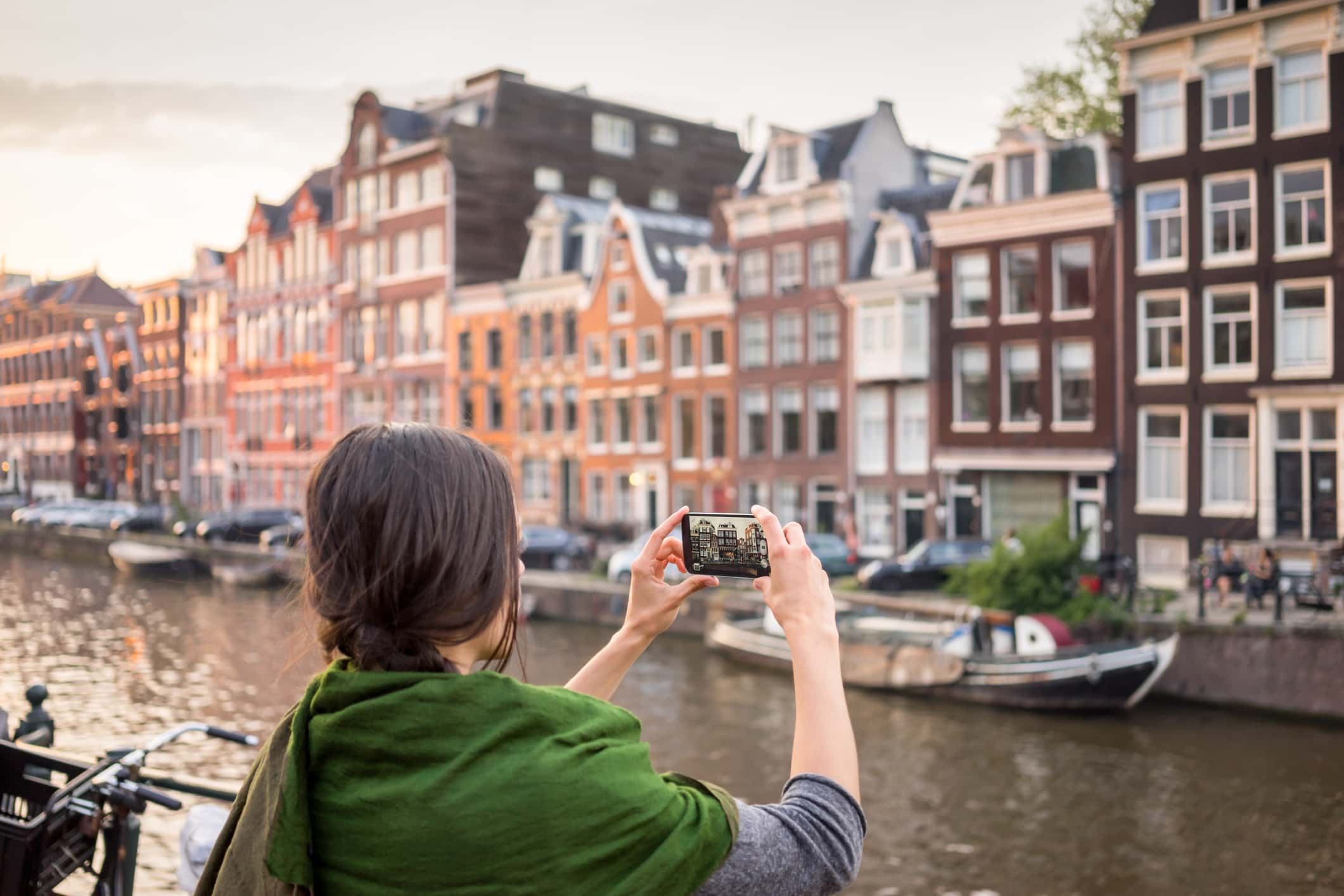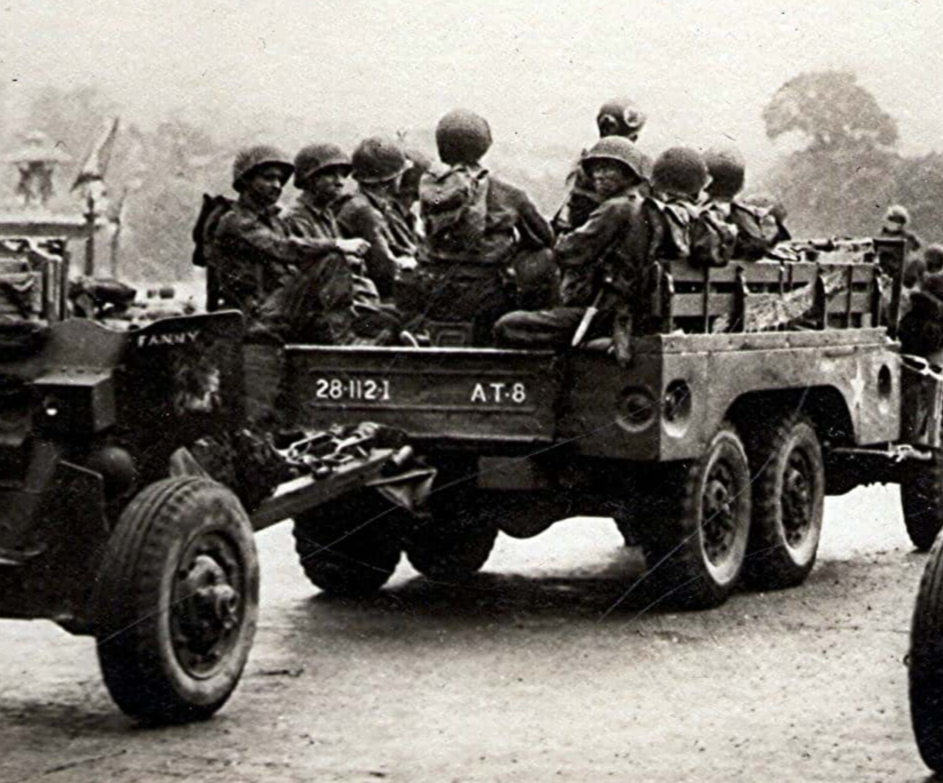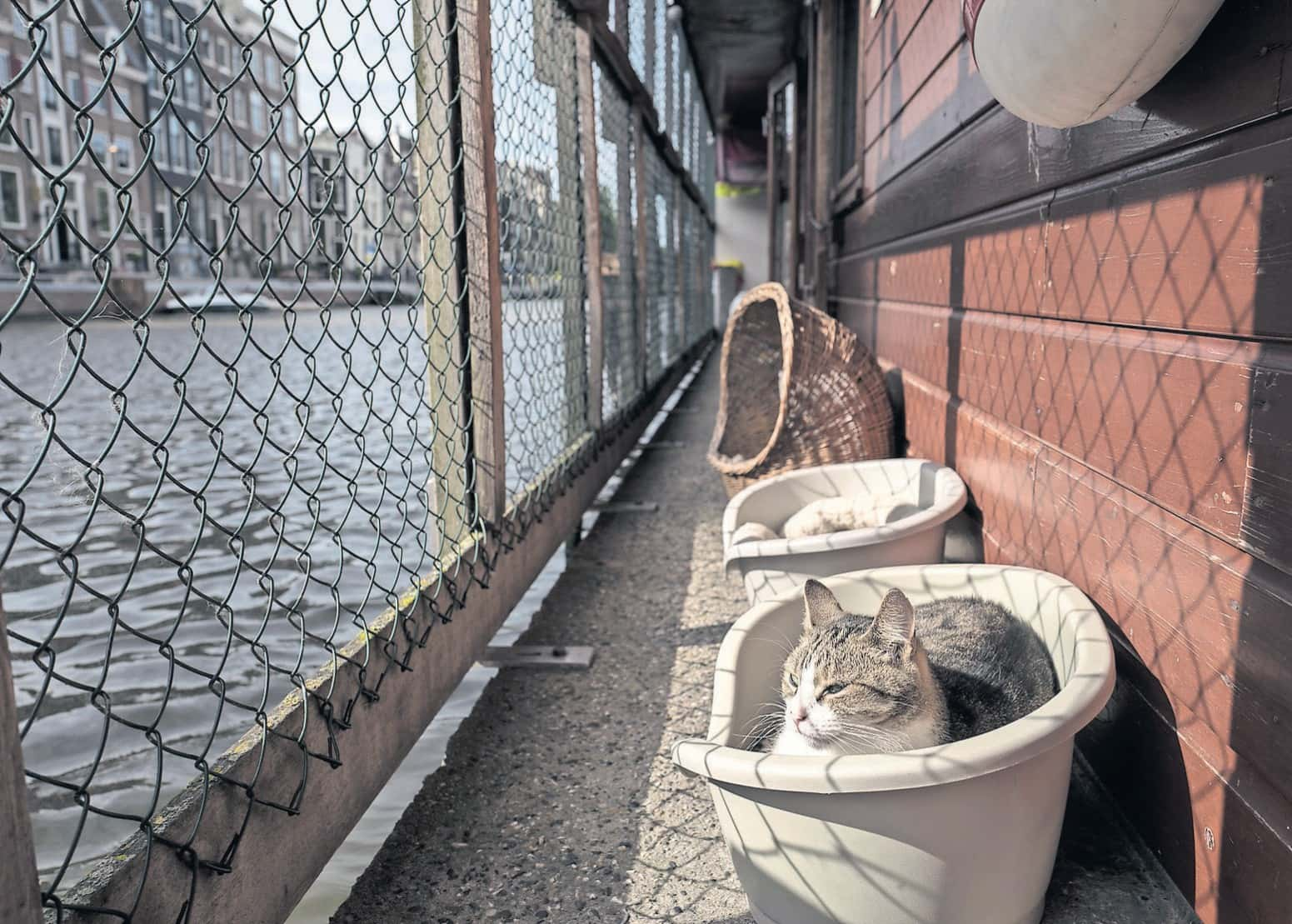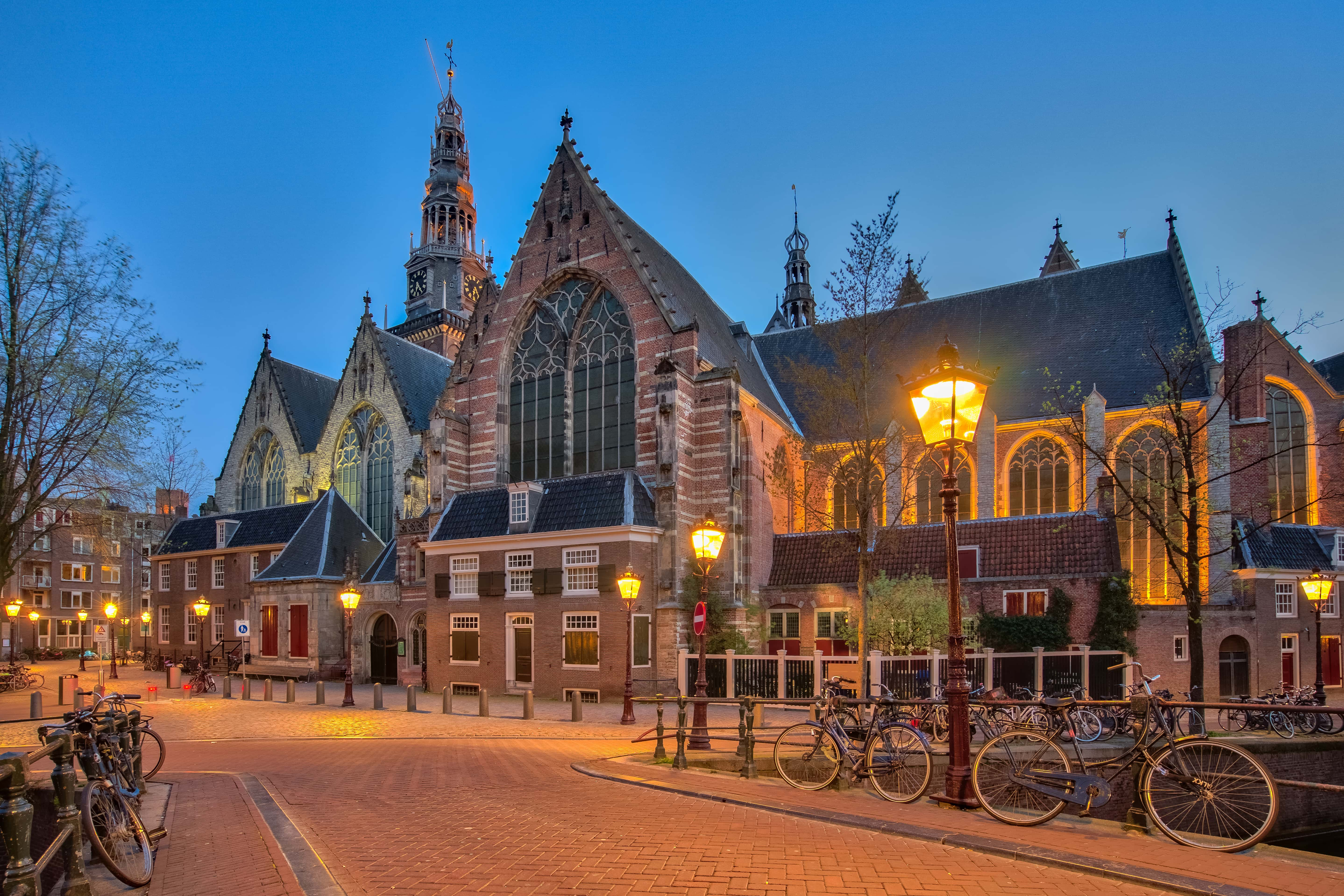"Heldhaftig, Vastberaden, Barmhartig" (Valiant, Steadfast, Compassionate—Amsterdam's motto)
The city of Amsterdam has long served as one of the most important capital cities in Europe. With a long and rich history, the only way to truly explore and appreciate this Dutch metropolis is to go there yourself and see what it has to offer—but if you can't manage that, the next best thing is to read these 44 facts about the iconic city!
44. Senior City-zen! Hah!
Amsterdam was settled in the 13th century AD. The name itself is first recorded as being used in 1275, though it wasn’t until 1306 when the Bishop of Utrecht, Gwijde van Henegouwen, granted Amsterdam city rights.

43. Small-Scale Sight, Large-Scale Success
Amsterdam was the site of one of the most important scientific discoveries in human history—the discovery of bacteria. Dutch scientist Anton van Leeuwenhoek lived during the Dutch Golden Age and began noodling around with a microscope. Much to his surprise, when he peered into the microscopic world he found it to be chock full of tiny oddities, and he became the first person to document observations of not just bacteria, but also red blood cells and spermatozoa. Such was his influence that a 2004 Dutch poll seeking the greatest Dutchman resulted in van Leeuwenhoek coming in fourth. (Goldmember was completely snubbed from the list).
42. A Hundred Bridges Too Far
Amsterdam is sometimes known as the “Venice of the North". Both maritime cities are famous for their labyrinthine layout of bridges and canals, but while Venice has about 12 more canals than Amsterdam, Amsterdam trumps Venice by having 872 more bridges.
41. A Collaboration They All Paid to See
In the late 1960s, a young Amsterdam-born film director named Paul Verhoeven met an actor named Rutger Hauer who also grew up in Amsterdam, and the two men worked together on an experimental television series called Floris. After that, the highly progressive and controversial films which they created (including Spetters and Soldaat van Oranje) sold millions of tickets in the Netherlands, despite the fact that Dutch films had to compete with foreign films from the rest of Europe and the United States. The pair's biggest hit was the 1973 film Turkish Delight, which was seen by a total of 3.5 million Dutch people (26% of Dutch people alive at the time) that year. It is still the most successful Dutch film ever made. Both men would go on to Hollywood to further their careers, with Hauer playing the villain in Blade Runner and Verhoeven directing Starship Troopers, Basic Instinct, Robocop, and the hit Razzie-winning film Showgirls.
Turkish Delight (1973)
40. Peculiar Pilgrimage
The "Miracle of Amsterdam" occurred in the year 1345. A dying man was given the Holy Sacrament on the 16th of March, and promptly threw it back up again. The regurgitated Host was placed into a fire, but the next day it was still intact and retrieved from the ashes. The remarkable event was hailed as a miracle by the city and by the Bishop of Utrecht, and even today thousands of people take part in the stille omgang, or silent walk, in commemoration.
39. Bike City
One of Amsterdam’s most well-known traits is that it's very bike-friendly. It's a city where 60% of traveling is done on a bicycle and the streets are divided into car and bike lanes—at any given time, Amsterdam is home to over 1,000,000 bicycles. However, the ubiquitousness of bikes has led to an unexpected problem: Amsterdam's canals become the final resting place of over 30,000 bicycles every single year.
38. It’s No Promised Land, But It’ll Do
For over 370 years, Amsterdam has maintained a strong Jewish community in Europe. In a time when other countries expelled their Jewish populations, Amsterdam remained open to them (though it did depend on how rich said Jews were when they arrived). Through generations, countless Jews have made Amsterdam their home. Even after the very dark cloud of the Holocaust, during which 80% of the city’s Jewish population was liquidated, the city continues to honor and remember this ancient community.
37. Foreigners Welcome
As early as the 17th and 18th centuries, Amsterdam gained a reputation for being open to immigrants, and soon the city’s population was mostly made up of people who had moved there in search of a better life. Some of the groups that settled in the city included German Protestants, French Huguenots, Jews from Spain and Portugal, and Flemish refugees from Antwerp.
36. See It While You Can!
For anyone who’s always wanted to see the city of Amsterdam, they are advised not to delay the trip too long. Nearly all of Amsterdam is below sea level, some of it going as far down as 6.7 meters below. And if you've ever listened to Al Gore and can put two and two together, you can see how prolonged climate change might not bode well for the maritime metropolis.

History's most fascinating stories and darkest secrets, delivered to your inbox daily.
35. Burn this Mother Down!
While one great fire was enough for London, Amsterdam suffered two of them within about thirty years—one in 1421 and the next in 1452. The second great fire burned down over three-quarters of the city, which prompted Holy Roman Emperor Charles V to decree that buildings from then on had to be made of stone, not wood.
34. Gimme Those Beans!
Residents of Amsterdam will no doubt be pleased to know that they, on average, consume at least 140 liters of coffee per year. For those without calculators for brains, that translates to just over three cups of coffee per day.
33. Where René Rolled
As a philosopher, scientist, writer, and mathematician, it’s hard to measure René Descartes’ full impact on Western philosophy. While the French-born Descartes was known for his travels, he spent more than two decades in Amsterdam. It was during this period that he wrote the majority of his most well-known works, such as Meditations on First Philosophy, Geometry, and Dioptrics.
32. Call a Doctor
Between the years of 1663 and 1666, the Black Demise, which wiped out millions during the Middle Ages, hit Amsterdam hard. While the disease was slightly less destructive than it had once been, more than 10% of the city's population perished within this time period, including nearly 25,000 in 1664 alone.
31. Diverse Crowd
Amsterdam contains such a multicultural population that 180 nationalities are represented in the city (and that’s not counting the tourists). Not only that, more than 80% of Amsterdam's population can speak more than two languages.
30. The Artist’s Touch
Amsterdam is well known in the art world for the number of painters and artists who either grew up in the city or who relocated to it while in the middle of their careers. These include the legendary painters Willem Roelofs, Vincent Van Gogh, Catharina Backer, Rembrandt, Adriana Spilberg, and Johannes Vermeer. Many of these artists lived during the time of Amsterdam’s first Golden Age, leading to some of the most well-known Dutch art ever made.
Vincent Van Gogh museum in Amsterdam.
29. Didn’t We Win?
In a case of supreme irony, the reason for Amsterdam’s decline as a major European city was the Glorious Revolution of 1688, which resulted in the Dutch Stadtholder William of Orange being crowned as William I of England. But just like a child with a new toy, William decided that his original kingdom was now secondary to the new one, and gave most privileges to the English while allowing the Netherlands to decline. London became the home of Dutch merchants, and the economic power of Amsterdam all but vanished.
28. Move Over, Wall Street
Given Amsterdam’s important role in the history of commerce and European economics, it should surprise nobody that the city is the location of the world’s oldest stock exchange. It was first established by the Dutch East India Company in 1602.
27. I Wanna Be Like You!
During the reign of Emperor Napoleon Bonaparte, he took what had been called the Batavian Republic and made it into the Kingdom of Holland, and named his younger brother, Louis Bonaparte, its king. While King Louis was a sincere ruler (learning Dutch and forcing all his French colleagues to speak it as well), what aggravated everyone was his refusal to pick a permanent city for the royal court. He traveled between Rotterdam, The Hague, Amsterdam, and several other locations, sometimes staying in a city for less than two months. Eventually, the diplomatic corps of Europe petitioned King Louis to pick a capital city just so that they could keep up with him. His nomadic nature was attributed to his alleged "lunacy".
26. Hard to Get Bored
Amsterdam is well known for its many celebrations. In the year 2008 alone, the city hosted 140 festivals and events. One of the most well-known festivals is King’s Day (or Queen’s Day if the ruler is a Queen), which celebrates the birthday of the ruling Dutch monarch.
25. How Do You Spell That Again?
The original name for the city of Amsterdam was actually Amstellodamus. Before it was a city, the small fishing village got its name from the Amstel river and the dam that crossed it. Over time, the name was shortened and changed to the pronunciation of today.
24. Progressive City
Amsterdam was the first capital city in the world to allow LGBTQ people to marry each other. This occurred in 2001, while everyone else was busy waiting for a space odyssey to happen. In the years since, their Gay Pride parades have been incredible spectacles held on boats in the canals which draw hundreds of thousands of tourists each year.
23. Everyone’s a Critic
Amsterdam’s Rijksmuseum is famous for its art collection, but also for its brilliant architecture. The building was designed by Pierre Cuypers, and his Catholic faith came through in the museum's design. However, this caused King Willam II, a Protestant, to openly refuse to enter the museum, and even to snub the grand opening.
22. Awesome Airport
Schiphol, Amsterdam's airport, is famous for its organization and sophistication. This government-managed airport offers more direct flights than any other airport in the world. That translates to 4,633 flights a week and 60 million passengers per year, though that only makes it the third busiest airport in Europe, after London's Heathrow and Paris' Charles De Gaulle.
Unsplash
21. For Love of the Game
In 1928, Amsterdam hosted the Summer Olympics. It was the first year where the Parade of Nations at the opening ceremony featured Greek athletes marching into the arena first and the hosting country marching in last, a practice that is still in place today. A symbolic fire was also lit for the first time during the Amsterdam games, and it was the first year that athletes from Asia won gold medals. Quite the year!
 1896
1896
20. Animal-Loving Athlete
One heartwarming story from the Amsterdam Summer Olympics would go down in Olympic legend: Australian rower Henry Pearce was competing in the quarter final of the single sculls event when a family of ducks was about to cross his boat's path. Surprisingly—and adorably—Pearce stopped rowing to let them pass rather than simply plowing through them. The cherry on top was that Pearce still won the heat, and went on to win the gold medal.
19. That’s a Capital Idea!
Strangely, though Amsterdam is officially listed as the capital city of the Netherlands, the country's government isn't actually based in the city—it's located in The Hague. This has led some to misidentify The Hague as the Dutch capital, but can you really blame them? Get your stories straight, Netherlands!
18. A City on Stilts
All of Amsterdam is actually built on water, meaning its buildings need to be built on posts (originally wooden posts were common, but now concrete is used) that are hammered into the soaking wet ground just so they don't sink. The average building sits on five to ten support poles, but the enormous Royal Palace has over 13,000!
17. German Occupation
The Second World W. can safely be described as one of the worst periods in the history of Amsterdam. With the invasion of the Netherlands by Third Reich Germany, the capital city’s Jewish population was in dire trouble. As the Nazis, with the assistance of Dutch authorities , began taking away Jewish people’s rights and arresting them, Communists and others on the left organized a general strike. It began on the 25th of February and involved more than 300,000 people. It took the Nazis and their sympathizers over three days to break the strike, and it remained the only mass demonstration against the Holocaust to be organized by non-Jewish people.
 BiblioArchives / LibraryArchives, Flickr
BiblioArchives / LibraryArchives, Flickr
16. A Little Girl’s Memory
Of the nearly 80,000 Jews who lived in Amsterdam by 1941, one of these was the now-legendary Anne Frank. Frank and her family famously hid in an attic during the German occupation of the Netherlands. Sadly, they were betrayed and discovered, and all but one of them, the father, would perish in concentration camps. However, Frank’s diary managed to survive, and thanks to the efforts of her father, it put an individual face on the unimaginable suffering of millions during the Holocaust. Their original attic has been preserved as a memorial to Frank and the others who hid there, and it's still one of the most popular sites in the city today.
15. Hunger and Despair
Sadly, as Dutch resistance was defeated and scattered, the Nazis continued their persecution of Jews and others that they considered undesirable. Communication with the rest of the country was broken, and the conflict brought on such a shortage of food that by the winter of 1944, the city and country were both starving. People were forced to survive by eating dogs, cats, and even tulip bulbs.
14. All That Glitters
From the late 1500s to the late 1600s the Dutch entered a Golden Age, and Amsterdam was at the heart of this boom. The pursuit of commerce drew many to the city, and huge developments were undertaken. Ships sailed across the world and entrepreneurs of all kinds were welcomed to the city, regardless of religion or culture. However, there was a dark side to this age. Dutch colonialism thrived during this era, which often meant misery for the indigenous people who dealt with these voyagers. The era also led many Dutch people to enter into the slave trade, blighting millions of lives in the process.
13. Choosing the Wrong Side
Amsterdam actually chose the losing side in one of the most important wars in Dutch history: the Eighty Years Combat, also known as the Dutch Combat of Independence. While the majority of Dutch cities fought for their independence against Spanish rule, Amsterdam actually continued to build ships for the Spaniards, most of which were promptly sunk by Dutch rebels.
12. The Shoe’s on the Other Foot
While there is no sure origin for clogs, the iconic wooden shoe of the Netherlands, Amsterdam is home to the oldest clog ever found. Discovered in Nieuwendijk, this piece of ancient timber footwear dates back 800 years.
11. Relics to the Past
To the chagrin of many a teenaged tourist, Amsterdam has the most museums-per-square-foot of any world capital. The subjects of these museums are also incredibly diverse, from Anne Frank to maritime history, so there's something for everyone.
10. Progressive Protection of Prostitutes
Amsterdam’s legalization of prostitution allows for prostitutes to advertise their services in venues that have formed the city's famous red-light district. Interestingly, visitors to said district might notice that some of the lit windows have a purple light instead of red—this is usually done to distinguish transsexual prostitutes from cisgender ones. Not only that, but in 2013, the world’s first prostitution museum was opened in Amsterdam.
9. Creative Ladies
At the turn of the 20th century, a special women’s circle would meet weekly to pursue their love of painting. These women, including Thérèse Schwartze, Jacoba Surie, and Coba Ritsema, were all from wealthy backgrounds, which allowed them to pursue their artistic dreams freely. Their group became known as the Amsterdamse Joffers, and their work continues to be preserved in museums across the Netherlands.
8. Golden Age II: Electric Boogaloo
A second Golden Age is said to have come to Amsterdam at the end of the 19th century. The Industrial Revolution brought a multitude of new workers to the city, along with new ideas such as socialism. It was also a time of great building; many new museums were built in this period, and a canal connecting Amsterdam to the Rhine was dug, which brought further economic opportunities to the city.
7. Change Hurts Sometimes
Unfortunately, new ideas are not always well received. When socialism spread among the working-class of 1880s Amsterdam, a severe backlash followed right behind. The authorities responded with brutality, such as during the Orange Riots of 1887, when a pub known for its socialist patrons was charged by dissenting citizens, but the authorties only took into custody those socialists who were trying to fight back. This led to a liquidation attempt on the chief superintendent of the law enforcement. The attempt was unsuccessful and the would-be assassin was imprisoned, but upon his release, he was allegedly welcomed as a hero, with a laurel placed on his head.
6. Make Sure You Know the Difference
We've all heard it: in Amsterdam, a café is a coffee shop, while a coffeeshop is a place where they sell marijuana. But, believe it or not, even in Amsterdam these establishments are not completely by the law. However, the authorities tolerate such small-scale operations because they’re aware that such trades will go on regardless if they’re in a shop or on the streets, and at least the coffeeshops pay taxes.
5. Floating Feline Friends
Amsterdam’s canals support many boats, some stranger than others. One particularly peculiar boat serves as a drifting sanctuary for cats. Since it’s out in the open, and the world is filled with cat-lovers, the cat boat has become a popular tourist attraction.
4. A New Take on Hitch-Hiking
With all these bikes around, a new method of travel has emerged: the Yellow Backie scheme. If you're new in town, just look for a bicycle with a yellow luggage rack, call out “backie,” and watch as a local pulls over and lets you hop on the back of their ride, offering a lift to your next destination.
3. Slim Pickings
Looking at the architecture of Amsterdam, one might marvel at the incredibly narrow buildings packed side by side. Surprisingly, the reason so many of these structures are so narrow is because of a bizarre tax loophole in the 17th century. Residents were taxed on the width of their buildings, and so many savvy Amsterdammers began to build as narrow as possible, though many of these buildings got wider at the rear, only appearing narrow from the front. If it had been a contest, the winning prize must have gone to whomever constructed the building at Singel 7—it stands just one metre wide.
2. It’s Well Named
The Oude Kerk (AKA the Old Church) is Amsterdam's oldest building. It was first noted as being built in 1213, but was finally consecrated by the Bishop of Utrecht in 1306. Ironically, the Oude Kerk now stands in the middle of the Red Light District, no doubt forcing religious tourists to awkwardly hurry past row upon row of glass windows advertising prostitutes to visit the ancient church.
1. The Not-So-Great Combat
While the Netherlands stayed out of World WI, its population didn’t escape totally unscathed. In Amsterdam, there was such a serious food shortage that when a ship filled with army supplies was docked in the harbor, the Dutch had to summon army units to stop men and women from looting the supplies. Six were liquidated and over a hundred were wounded when the army fired on the starving citizens.
Sources: 1, 2, 3, 4, 5, 6, 7, 8, 9, 10, 11, 12, 13, 14, 15, 16, 17, 18, 19, 20, 21, 22, 23, 24, 25



















































